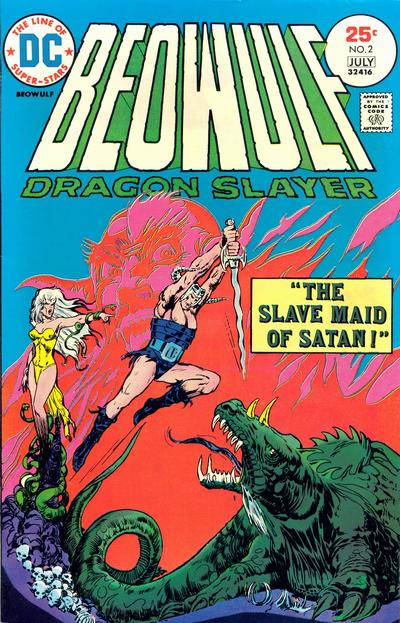 A humorous take on a heroic Beowulf! (Rutledge)
A humorous take on a heroic Beowulf! (Rutledge)
 King Beowulf: An Anglo-Saxon Hero
King Beowulf: An Anglo-Saxon Hero
Beowulf is an epic Anglo-Saxon poem believed to be among the oldest English literature ever recorded. As such, it stands as a lasting example of the Anglo-Saxon culture and society represented within the work. Throughout the earlier parts of the poem, the character of Beowulf is represented as a young Geatish (Northern Germanic) warrior, brave and cunning, who travels to Denmark to slay monsters for a wise king. In the latter parts of the poem we encounter Beowulf as the wise king, who is not so eager to battle. Both of these representations are of great importance in the heroic or “warrior” code that ruled Anglo-Saxon society.
 A humorous take on a heroic Beowulf! (Rutledge)
A humorous take on a heroic Beowulf! (Rutledge)
The dragon-fight scene of Beowulf establishes the main character’s rule as king. It presents the idea of an ancient treasure that was buried because a last survivor of an older race realized that it would be of no use to him as his tribe was gone and he was to perish. This demonstrates the connection an individual has with his tribe, and what the loss of that connection means. The dragon becomes the keeper of a goblet, part of this treasure hoard, and is enraged when he finds that it has been stolen. The goblet thus becomes a symbol of power. Unlike Grendel, or Grendel’s mother, the dragon is a threat, not because of its own perceptions, but because it has genuinely been wronged: “the loathsome foe would repay with fire it’s precious drinking cup.” (Beowulf, lines 2305-2306) Indeed, the dragon terrorizes Geatland with fire. It is here that we learn that King Hygelac, Beowulf’s uncle and king of the Geats, has died in combat. Beowulf is then offered the throne by his aunt, but turns it down to serve the son of the former king. Here we are shown that Beowulf is not only a brave warrior, but a skilled leader and a fair-minded and loyal individual. Later, Beowulf becomes king, and is celebrated for being able to keep the Geats from war with Sweden. However, there are some marked differences between Beowulf the warrior, and Beowulf the king. Lines 2331-2331 state, “his [Beowulf’s] breast within groaned with dark thoughts— that was not his custom.” (Beowulf) The poem presents a wiser king who understands the sacrifice of warring. There is simply more to lose from this new perspective, and he wonders whether he has somehow offended G-d. Beowulf’s perspective can now be compared to that of the wise King Hrothgar, and his own uncle King Hygelac. Nevertheless, even with concerns, as a heroic king, Beowulf takes his men into battle to find the dragon.
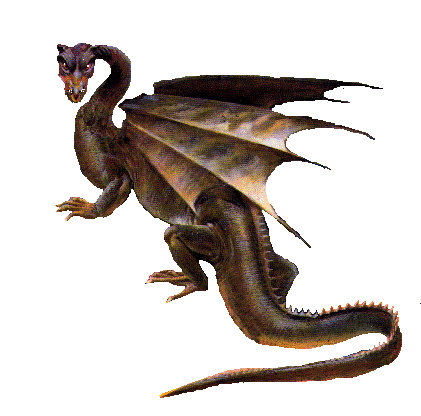 This is an example of the kind of traditional Anglo-Saxon dragon Beowulf could have battled! (Dragon Gallery 2)
This is an example of the kind of traditional Anglo-Saxon dragon Beowulf could have battled! (Dragon Gallery 2)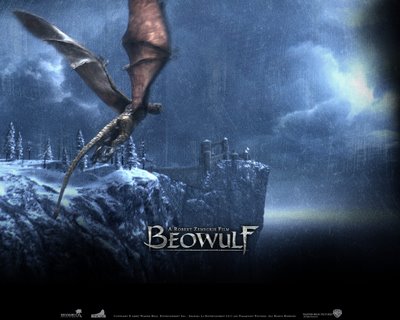 This is a picture of the dragon from the 2007 computer-animated version of Beowulf! (Beowulf)
This is a picture of the dragon from the 2007 computer-animated version of Beowulf! (Beowulf)
At this point, the poem hints heavily that this will be Beowulf’s last battle. In lines 2444-2446, it is said, “so it is sad for an old man to live to see his young son ride on the gallows.” (Beowulf) Although there is a sadness in the loss of life, life is continuously mentioned as being ‘loaned’. This was a great concept in Anglo-Saxon culture. Fate, or ‘wyrd’, did not promise a warrior a long life. A heroic man would seek to honor his king and create a reputation as a great warrior, one which would live on beyond his own death. A king would seek to appear fearless in the face of danger, and lead his army into battle. This is what Beowulf attempts to do. He recounts his great battles to his men, and the poem again hints that he will not survive (“Beowulf spoke, said boasting words for the very last time.” Beowulf, lines 2510-2511) However, his army abandons him as Hrothgar’s army did long ago. Beowulf is left to seemingly fight his final battle alone, but a young warrior named Wiglaf scolds the soldiers for abandoning their king and returns to aid Beowulf, telling the king, “with all your strength you must protect your life— I will support you.” (Beowulf, lines 2667-2668) Here, the transition of noble warrior/wise king is complete, with the younger hero taking Beowulf’s position. Beowulf has some interesting comparisons with Christian and pagan tales. For example, the goblet that is stolen from the dragon can be seen as a sort of ‘holy grail’. The last survivor saw it as something he was unworthy of, yet the slave sees it as something he had a right to take. The dragon, disturbing the treasure of men, takes it as his own; but the great King Beowulf must reclaim it for man. Comparisons can also be made to specific works of fiction. For example, there are many ties to Tolkien’s The Hobbit and Lord of the Rings trilogy. The slave’s theft of the goblet from the dragon is not unlike Bilbo’s theft of a cup from the dragon Smaug; although Bilbo tricks Smaug to steal the cup, showing the hobbit’s superiority to the dragon. King Beowulf can be compared to King Theoden of Rohan, who insists his men fight the armies of Sauron even though he has little reason to believe they will survive. Even the narrator of Beowulf is echoed when Tolkien’s King Theoden states “ ‘Alas!’ he said, ‘that these evil days should be mine, and should come in my old age instead of that peace which I have earned. Alas for Boromir the brave! The young perish and the old linger, withering.’ ” (Tolkien, 121) This is comparable to the narrator of Beowulf’s statement on old men and dying youth. Tolkien himself felt that Beowulf was a tragically misunderstood poem, and called it “a historical poem about the pagan past, or an attempt at one.” (Tolkien, Beowulf: The Monsters and the Critics) Other scholars have stated about such comparisons: “there is a general social pessimism in Tolkien’s writing that parallels his Anglo-Saxon counterparts’ damnation of the pagan hero; in Beowulf, monsters were themselves dangerously anti-heroic, characteristic of the fallen hero or fallen man and in that represented the doom of society.” (Rorabeck) Indeed, many scholars see Beowulf’s three main obstacles— Grendel, Grendel’s mother, and the dragon as being symbolic for the evils of society, retribution and vengeance, and fate, respectively.
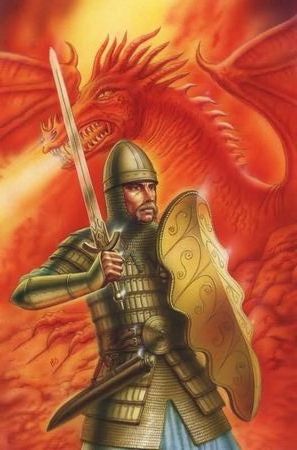 (Dragons vs knights)
(Dragons vs knights)
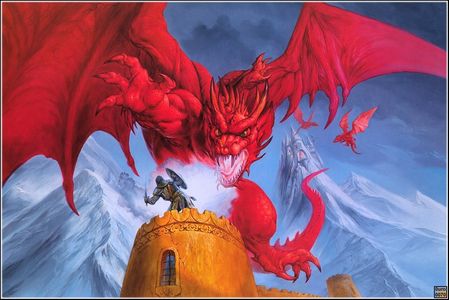 (Dragons vs knights)
(Dragons vs knights)
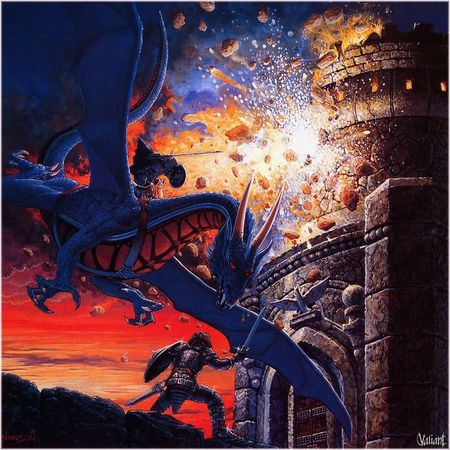 (Dragons vs knights)
(Dragons vs knights)
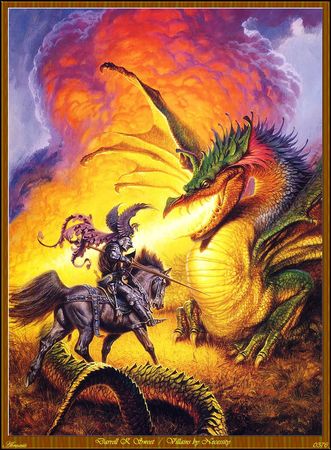 (Dragons vs knights)
(Dragons vs knights)
 (Dragons vs knights)
(Dragons vs knights)
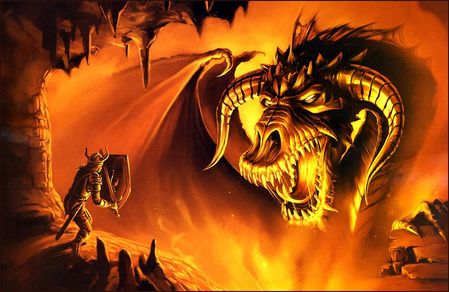 (Dragons vs knights)
(Dragons vs knights)
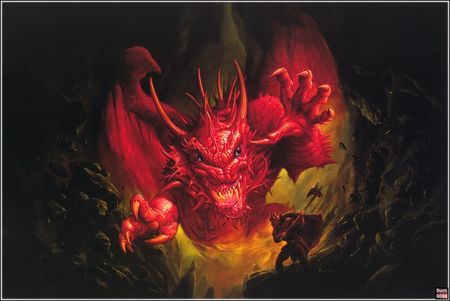 (Dragons vs knights)
(Dragons vs knights)
So we see that in fighting the dragon, Beowulf is fighting that which is anti-heroic, anti-Anglo-Saxon, and consumed with greed and anger. All of society depends on this battle, not only because of Beowulf’s reputation, or because Beowulf’s death would bring the kingdom into chaos and war, but because the dragon is a very real threat to the Geats. As man and beast battle, it is clear that Beowulf is weaker than he once was. He strikes the dragon with his sword Naegling, but it snaps in half. The dragon bites Beowulf in the neck, and the warrior Wiglaf stabs it in the stomach as it scorches his hand. Beowulf, in his final heroic action, pulls another knife from his belt and stabs the dragon fatally. Although the dragon is defeated, the wound to Beowulf’s neck is venomous. He asks Wiglaf to bring him the dragon’s treasure out from the hoard. Death can only be meaningful when a warrior (or a king) knows what he was fighting for. Beowulf makes it clear that Wiglaf is his successor when he gives him his collar and tells the young warrior that he must look after the Geats, asking that he build him a hall called ‘Beowulf’s Barrow’; here, Beowulf is seeking to secure his memory as Hrothgar did with the creation of Heorot. Wiglaf embodies King Beowulf when he speaks to the Geats of the fall of their great hero and what they have to face ahead. It was, in part, the soldiers who brought the burden of war upon themselves by not obeying the comitatus, and following their king into battle. Beowulf’s funeral is both somber and fearful as a woman laments of the loss of her king and the future. Beowulf’s body is placed high above the sea in a pyre for all to see the beloved king. The irony of Beowulf’s death is that the treasure he died securing is rotted; but the rotting treasure is Beowulf’s dead body. Its value is no less. Just like the last survivor knew the treasure was not to be his own, it will never be Beowulf’s, either. Instead, like all great warriors and kings, Beowulf’s legacy will be in the tales of his heroism and sacrifices for his people. It is interesting that the poet decided to bury Beowulf above the sea when monuments like Stonehenge suggest that the dead were buried in below-ground chambers underneath standing dolmens. However, perhaps because the poet wished to exemplify Beowulf as a hero and present his body as part of Geatland itself, he set the king above the sea.
Beowulf is truly the story of both a warrior and a king. And although there are differences in each representation, both characterizations of Beowulf show that he is a hero by the standards set forth by Anglo-Saxon society. It is no wonder then, that the poem bestows upon Beowulf the honor it gave other kings mentioned— “he was a good king.” (Beowulf, line 2390)
Rutledge, Charles. "A Brief History of Sword-and-Sorcery Comics." Sword & Sorcery 10 May 2008. http://www.swordandsorcery.org/comicshistory.htm
Icons Cited:
(Walking dragons) Dragon Graphics Plus "Dragon Gallery 2" 10 May 2008. http://www.christmas-graphics-plus.com/free/dragon-gallery2.html
(Silver dragonhead) Draconian.com "Dragon Animations" 10 May 2008. http://www.draconian.com/artwork/anim/animation.htm
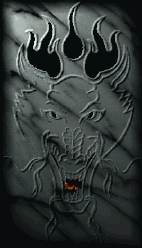 Return to Main Page!
Return to Main Page!